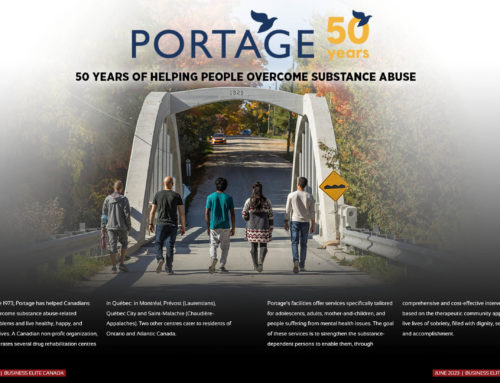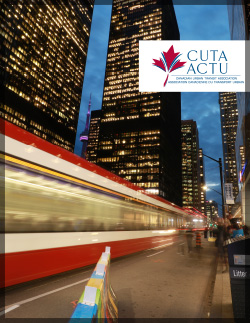Canada’s Voice for Public Transit and Integrated Mobility
By Anna Guy
World class cities rely on world class transit systems. As more and more Canadians rely on ever-evolving modes of transit—from buses and subways to ride sharing programs—integrated urban mobility (IUM) plans become ever more vital.
This is where CUTA steps in. The Canadian Urban Transit Association (CUTA) is the collective and influential voice of public transportation in Canada. CUTA is dedicated to being at the centre of urban mobility issues with all orders of government, and delivering the highest value to its members and the communities they serve.
CUTA members include the vast majority of transit systems in Canada, from Victoria and Vancouver to Quebec City and St. John’s. Members include transit systems, government agencies (federal, provincial, regional and municipal), business members (companies or persons engaged in the manufacture or sale of transit equipment or services) and affiliates (associations, individuals and others).
CUTA is the voice of public transit and integrated urban mobility, which the organization defines as “the ability for people to move easily from place to place in urban areas according to their own needs.” IUM is a people-focused goal that starts with public transport services connected to all modes of transport including walking, cycling, auto and alternatives to transportation: in other words, for everyone going everywhere. To work, to play, with disabilities, or without, moving seamlessly and affordably around the city.
“Cities are emerging with transit needs beyond what municipalities can sometimes provide for with local taxes,” says Marco D’Angelo, CEO and President of CUTA. “The federal government sees transit as something worth investing in across Canada as a strategic asset to grow the economy, public health and improve the transportation network.”
D’Angelo says CUTA is also looking at transit in the long-term, “to continue to give people the ability to move more easily from place to place according to their own needs, while connected to all modes.”
This long-term vision is supported by CUTA’s Transit Vision 2040 plan, which was developed to anticipate and enhance the growth and evolution of Canadian communities, while identifying the contribution that transit can make to support strong, livable and environmentally responsible communities. Specifically, CUTA advocates on policies for better accessibility to transit, on easing congestion, on building new transit infrastructure nationally, and on having the economic, social and environmental benefits of transit recognized across the legislative spectrum. In other words, CUTA is focused on making a positive impact on the daily lives of Canadians across the country.
“Customers are at the centre of our vision,” says D’Angelo, adding this will be a major focus at the 2018 CUTA Annual Conference and Canadian Transit Show, the theme of which is Putting the Customer at the Heart of Transit.
“The customer base is becoming more diverse. They are now offered better services through innovations such as transit apps that provide riders with real-time scheduling information, ride-sharing and cost-appropriate mobility options.”
“By 2040, how Canadians commute will look very different than it does today. This change will be driven by the growth of cities and changing lifestyle expectations,” says D’Angelo. “Customers are also more sensitive to safety and security, and there will be both a concentration and diversity of individuals, and so we need to focus on doing what we can to improve interactions with the public and integrating other modes of transit.”
On the business member side, CUTA recognizes trends towards more fuel-efficient vehicles that are deployed via electric and natural gas propulsion technologies to reduce the environmental footprint of Canadian communities.
In terms of the challenges and opportunities for CUTA, D’Angelo says expectations are very high and there is more scrutiny on transit than ever before. To address transit challenges, CUTA believes the best tool is accurate data, and the organization is investigating ridership trends to develop an industry-wide data comparability, as well as ways to reposition ridership as a metric of success.”
The over-arching theme to the future of transit is that there is no single solution, and that public transit must be tailored to the diverse needs of urban landscapes. “By strengthening transit’s position as an investment in quality of life, the economy and in environmental sustainability, we are making inroads in lessening our society’s dependency on single occupancy vehicles. A long-term vision, industry involvement and political leadership are key to ensuring that public transit maximizes its contribution to Canada’s economy and to the quality of life of all Canadians.”







